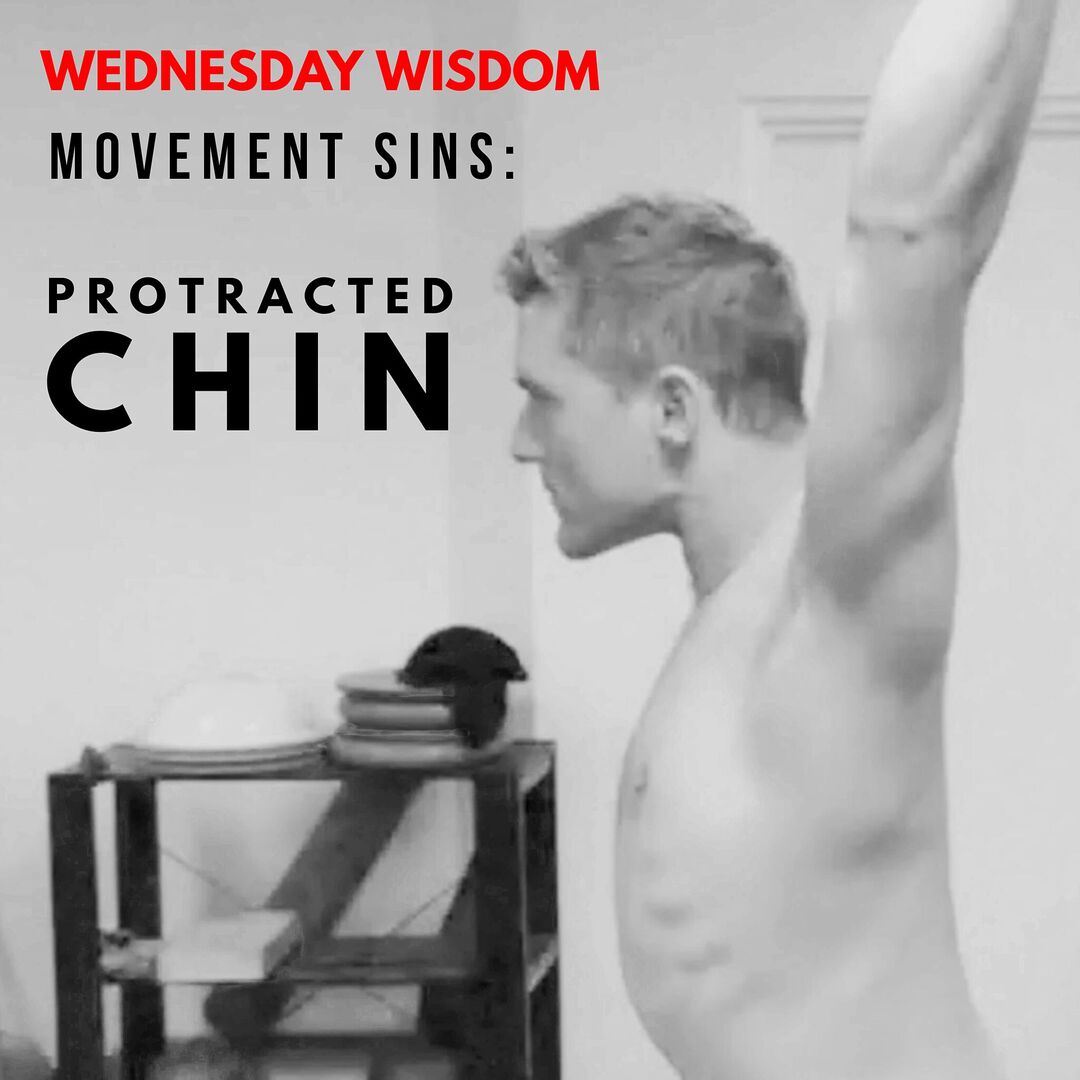We’re up to the 7th and final Movement Sin as covered in our Movement Restoration Coach course.
If you missed the previous posts scroll on down or head to “photos” in this group to find the posts and check them out.
So the full list of 7 common movement sins:
- Medial Knee
- Trendelenburg Sign
- Lumbar Hyperlordosis
- Excessive Posterior Pelvic Tilt
- Poor Push Pattern
- Poor Pull Pattern
- *Protracted Chin *
Let’s get into more detail on number 7…
Movement Sin:
PROTRACTED CHIN
This ‘forward head’ position is one that is becoming more and more problematic as our device and screen time increases. All you need to do is glance around on a train or at a bus stop to see almost everyone slumped with their head forward as they browse their phone.
As our neck becomes jammed in this position the cervical spine is compressed put under large amounts of strain, commonly leading to migraines and encouraging the thoracic spine and shoulders to adapt a kyphotic position.
The key muscle imbalance that causes this poor movement habit is:
Levator Scapulae dominating the Traps
The upper trap is commonly seen as “the villain” when it comes to shoulder and neck issues and cops the blame for being too dominant and tight, but the levator scap is actually the more common problem, and it’s dominance leads to the upper trap becoming weak and inhibited while stuck in an overstretched position.
What do we do improve this:
- Release the dominant and locked muscles – the levator scan and the upper trap.
– Using a massage ball and squat rig pole in a ‘rugby scrum’ position can be great here, as can a posture pro or kettlebell handle in a partner release.
- Activate and strengthen the lower and upper trap to support balanced scap and shoulder movement and reduce the dominance of the levator scap.
- Concentrate on drawing the chin back to create a ‘double chin’ in all movements, particularly those where the forward head is most common – push ups, rows and hinging movements.
For for Newsletter

